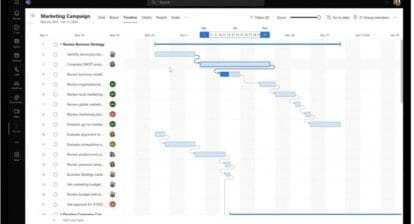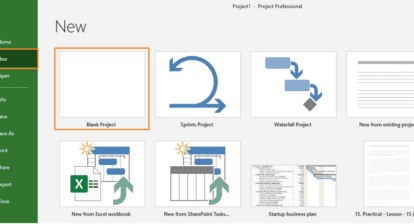
In his 1990 book, “On Becoming a Leader,” Warren Bennis articulated his famous 12 differences between managers and leaders. The last is the best-known:
‘The manager does things right; the leader does the right thing.”
But others are instructive for us. To paraphrase Bennis, “The project manager focuses on systems and structure; the project leader focuses on people.” I choose this one because there is one thing all experienced project managers know. Being a project manager is all about people: customers, stakeholders, and team members.
So, when we ask about project leadership, the answer is all about attitude. I believe that a mature approach to projects would see all project management replaced by project leadership.
“But okay,” I hear you say, “We know what we mean by project management. We understand the project processes and the specific disciplines we can knowledge areas or domains of knowledge. But what does a project leader do?”
My answer is that Project Leadership requires us to be intentional about the following:
- Team – the people we lead, day-to-day.
- Client or sponsor – the people for whom we lead our project.
- Stakeholders – the people to whom we have residual obligations.
- Self – a project leader must govern themselves.
Getting the Team You Deserve is Easy
I have long believed that you get the team you deserve. That is, if you expect your team to let you down, and look for every chance to prove yourself right, that exactly what you’ll find. If you think that any failure of your project will be because you could never hope to get the perfect team for the job, people will inevitably meet your expectations.
If, on the other hand, you content yourself with the fact that you have the best team you could possibly get…given the circumstances. If you respect your team and celebrate their diversity. If you take every opportunity to build relationships with them and develop each individual’s abilities, then, you will get the team you deserve.
In fact, I suspect that getting the team you deserve is inevitable. However, deserving the team you want takes work: a lot of work.
And everything you need to do is simple.
My four essentials of team leadership are the most important things you need to do. They are as follows:
- Pay attention to each individual
- Build a plan
- Craft and maintain a team
- Encourage communication
It is not difficult to make time to get to know each person on your team. Nor is it hard to listen to their hopes and aspirations and look for ways to support and encourage them. It’s simple.
And it’s a standard part of traditional project management to build a plan that will give confidence and assurance to your team. Better still, you don’t need to do that work: it’s better if your team does it. That way, you can harness multiple minds, ideas, and perspectives. It also means your team will commit to that plan. It’s no longer your plan. They can’t claim to have never believed in it at the first sign of troubles. So, building a plan is easy.
Crafting and maintaining a team are just a matter of understanding and adapting to the natural processes of group formation and evolution. And then, celebrating the team and finding ways to do things together. Let people do what comes naturally: caring for one another and collaborating on a joint endeavor. What could be simpler?
Communication also comes naturally to people. Put aside your innate inclination to be in control of the messages. A hub and spoke model of team communication with the project leader at the center has a single point of failure: you! Instead, create a culture in which everyone takes it upon themselves to keep their colleagues informed in an intelligent and efficient way. Simple!
But here is the rub. This may be all be simple; but simple is not the same as easy. In the chaos and confusion of a fast-moving project, there is a lot to do. So, keeping on top of that is not easy, but it is essential.
Leading Up
Governance is a key to the success of every project. It is the role of a project leader to advise on the processes that balance the competing needs of oversight and probity on the one hand, and agility and progress on the other.
You are leading your project on behalf of your client, sponsor, or boss. They should know what they want, what decisions they need to make, and where to place their attention to ensure that you and your team are doing your jobs well.
But, do they always know this? And, when they do, what part do you play in directing their attention and helping them to be effective? You best serve your sponsor, steering group, and project board by being an effective leader: not by being a competent manager.
Leading Out
I don’t know whether it is reasonable to say that we have a duty of care towards our stakeholders. Some, maybe. But I do believe we have some level of obligation to:
- Consult with them, seek out their opinions, and listen to them
- Understand their priorities and preferences (even if we cannot address all of them)
- Keep them informed in a timely way
- Treat them with respect at all times
Also, our roles may require us to influence them from time to time. We need our stakeholders to follow us, rather than be passive bystanders to our projects. They may not always support every choice we make, but we do need them to engage with the discussion.
For this, management is not just inadequate. To me, it feels disrespectful to try to manage stakeholders. What stakeholders need is leadership.
Leading In
Finally, we need to look inwards, and lead ourselves. We need to be able to act with control and integrity, even under the greatest pressure. And, thinking of pressure, we need to be able to develop resilience to not just cope in times of stress, but to thrive.
Integrity
Integrity should be non-negotiable for anybody that seeks to lead an endeavor that puts someone else’s money and reputation at risk. And that is your job. But has it occurred to you that integrity is not enough? The people around you also need to have trust in that integrity.
You must put aside your own needs and preferences to serve your client and act honestly, fairly, and openly, but that’s not all. You must also demonstrate the capability to do the job well and the reliability to show up and deliver on your promises. We have a word that captures all of this: professionalism.
Resilience
However, times can get tough. Both you and your team may find yourself under pressure. You need to be able to recognize the signs of stress in both your team and yourself. Then, you need to be able to deal with it.
“In the event of an emergency, put on your own oxygen mask, before you try to help other people.”
What great advice for a project leader in a stressful environment. Unless you are at your best, how can you be sufficiently resourceful to help your team? You need both:
- The skills to deal with your own stress, when it arises, and
- The discipline to build long-term resilience, to ward off stress.
Stress arises from feeling of no longer being in control. To recover from this kind of helplessness, you need to seize back control. My top three techniques for taking back control are:
- Deliberate optimism: focus on the resources available to you and keep alert for opportunities to make positive changes.
- Gratitude: celebrate and appreciate every little thing – no matter how small – that goes well. This acts as a counter to the long-term drag of focusing on everything that goes wrong.
- Flexibility: keep your eye on the end-goal, but adapt any way you need to in order to make things happen. This way, you exert control over events that can otherwise overtake your plan.
As for building up long-term resilience, this all comes down to the discipline of prioritizing good self-care despite your focus on the project. This means a combination of:
- Eating well – rather than rushing meals of junk food and filling gaps with valueless snacks.
- Exercising – to stay physically and mentally fit.
- Rest, relaxation, and good sleep – these are vital for your mental wellbeing.
- Emotional support – making time to nurture the important personal relationships that can sustain you through the tough times.
Summing up
Project leadership is a mindset. It’s a deliberate choice to focus on the aspects of our role (call it whatever you like) that are about people. All of this is, of course, in any good book or course about project management. What they don’t do is place these imperatives front and center. By thinking in terms of project leadership, this is exactly what we do. Project leadership is a big subject – and one I could write a whole book on. In fact, I did. This article introduces many of the ideas from my 2012 book, “Brilliant Project Leader,” published by Pearson. You can get a copy anywhere that you buy your books.
Related Content
Creating a Core Culture for Your Team: Strengthening Your Cultural Ecosystem
Check Out Your Culture: A Management Tool to See How Behavior Strengthens Culture
Mastering Leadership and Avoiding Burnout in Challenging Time







